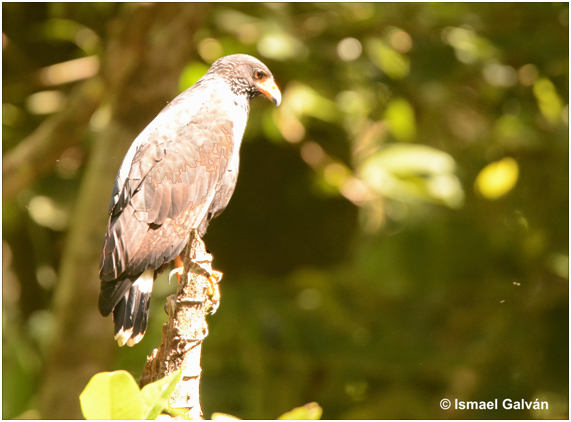Animal pigmentation has evolved because of several adaptive functions. In the case of pigmentation produced by melanins, the most common pigments in animals, the main function is protection against UV radiation. However, pigmentation also affects animal surface's ability to absorb solar radiation and gain heat, which may represent a thermal constraint for endotherms due to their relatively high and constant body temperatures. As darker colours absorb more radiation than lighter colours, dark-pigmented endotherm animals may exhibit limited performance under high ambient temperatures and thus be constrained at occupying hot environments. While the influence of pigmentation on the determination of the thermal niches of ectotherms, particularly reptiles, has been the focus of several studies, this remains an unexplored issue for endotherm animals. Here a detailed quantification of the expression of pigmentation phenotypes produced by melanins in 96 species of birds inhabiting the Spanish sector of the Iberian Peninsula was made, and their climate niche position was estimated by calculating the effects of ambient temperature, insolation and precipitation on bird occurrence at a fine 10 x 10 km spatial scale. After controlling for the body size and the nocturnal condition of species, and for phylogenetic and spatial effects, a positive association was found between plumage reflectance and the functional response of bird distribution to spring-summer ambient temperature and insolation but not to precipitation. Thus, bird species preferentially occupying the hotter and sunnier areas of Spain exhibit lighter plumage pigmentation. A similar association between pigmentation and preferences regarding precipitation in geographical distribution was not found. These findings suggest that darker birds are limited from occupying environments with high temperatures, unveiling a constraint in endotherms imposed by their pigmentation phenotype. informacion[at]ebd.csic.es Galván et al (2018) Dark pigmentation limits thermal niche position in birds. Funct Ecol doi:10.1111/1365-2435.13094
http://onlinelibrary.wiley.com/doi/10.1111/1365-2435.13094/full

 Open Call for Research Projects in ICTS-Doñana!
Open Call for Research Projects in ICTS-Doñana!



